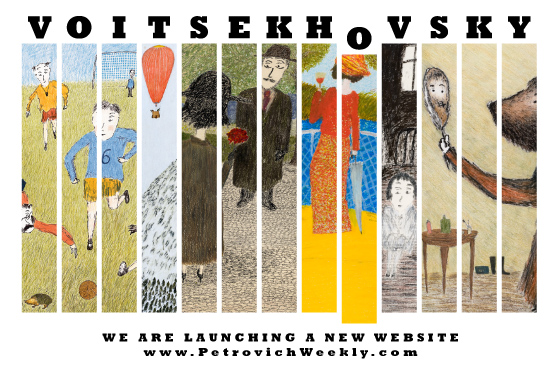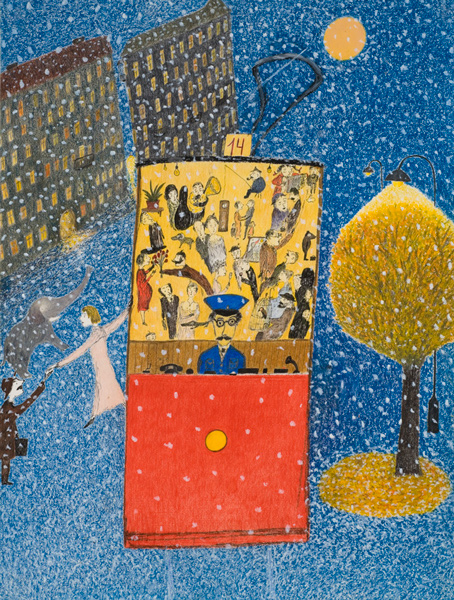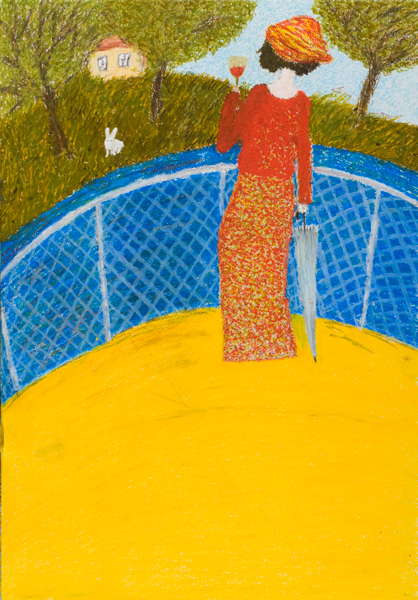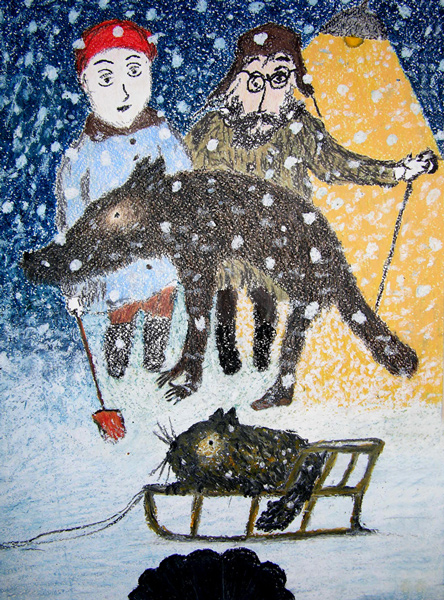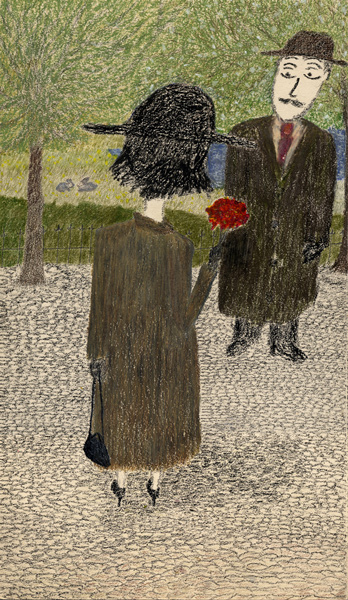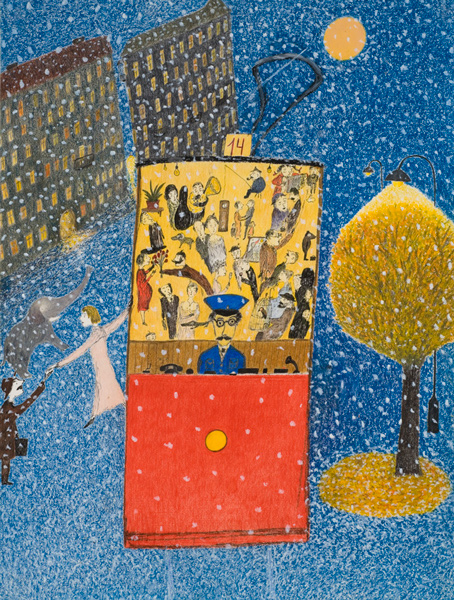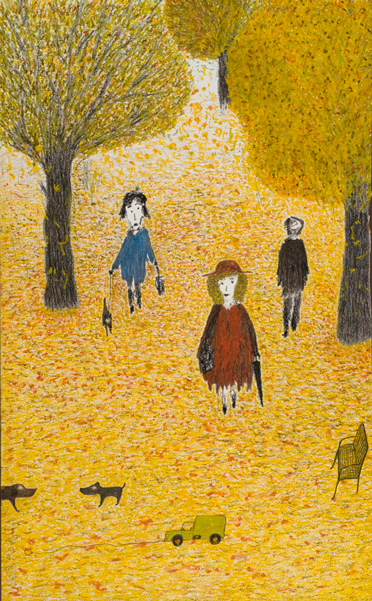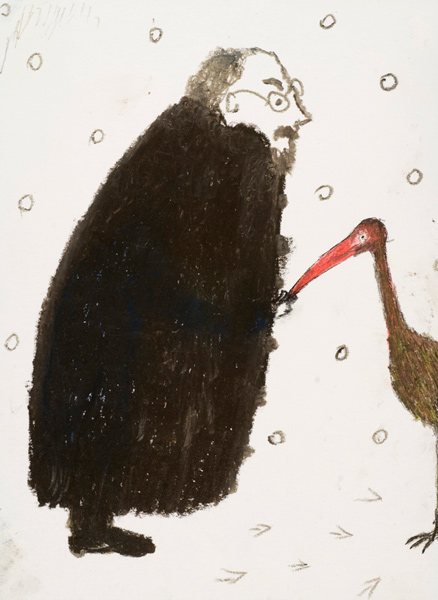Petrovich
We are launching PetrovichWeekly.com. Come back every Monday for new illustrations.
Alexander Petrovich Voitsekhovsky
by Elena Varshavskaya, Rhode Island School of Design
Alexander Voitsekhovsky is an outstanding graphic artist from Russia, who stands out for a rare gift of bringing together warm humanity and playfulness, acumen and good humor. His endearing treatment of everyday life is always tempered with irony introduced through elements of absurdity, fantasy and surprise used with unfailing ingenuity.
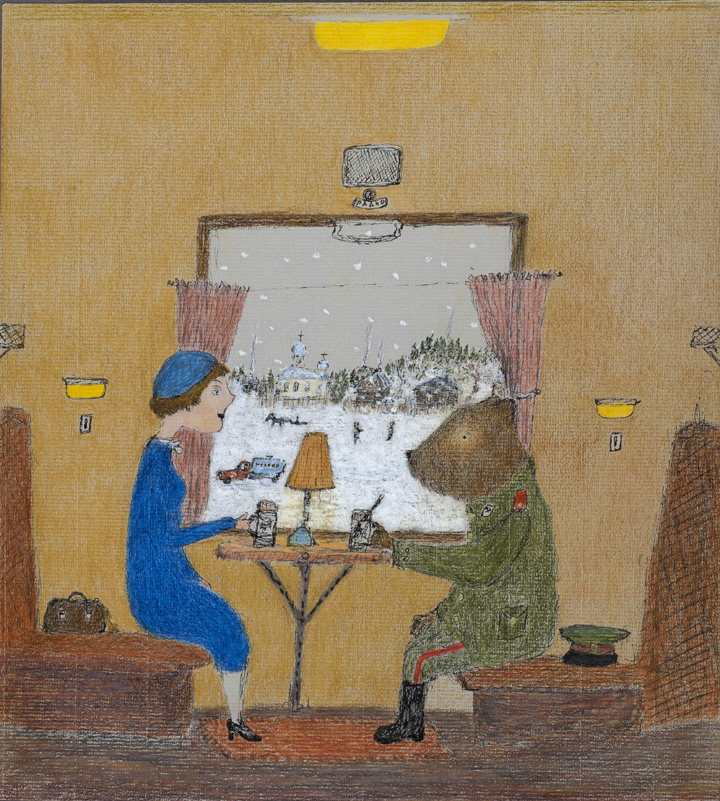 Alexander Voitsekhovsky’s art revolves around simple topics: city and country as well as the flow of life as such and – metaphorically – all kinds of journeys. Indeed, aren’t we always on the way just as his characters are – whether on a walk in the park or hurrying to our destination on public transportation or on a boat trip or undertaking an audacious journey from a rural backward province to a glowing and promising city? Ubiquitous in his works are animals, real and not quite so real but always an integral and intimate part of the life of humans or human-like beings themselves facing the same problems.
Alexander Voitsekhovsky’s art revolves around simple topics: city and country as well as the flow of life as such and – metaphorically – all kinds of journeys. Indeed, aren’t we always on the way just as his characters are – whether on a walk in the park or hurrying to our destination on public transportation or on a boat trip or undertaking an audacious journey from a rural backward province to a glowing and promising city? Ubiquitous in his works are animals, real and not quite so real but always an integral and intimate part of the life of humans or human-like beings themselves facing the same problems.
The ultimate strength of Alexander Voitsekhovsky’s pictures is in his focus on the universal constants of human nature; thus the broadest audiences across nations can naturally and easily relate to his characters, whether in the form of humans or that of humanized animals. Viewers of his pictures cannot but recognize their own dreams or thoughts, observations or experiences that the artist shows in his amusing pictures with full understanding, deep empathy and, furthermore, in a comforting light-hearted key. Psychologically truthful without moralizing, this art helps people to maintain cheerful spirits amongst people’s ordinary cares and worries that are often perplexing.
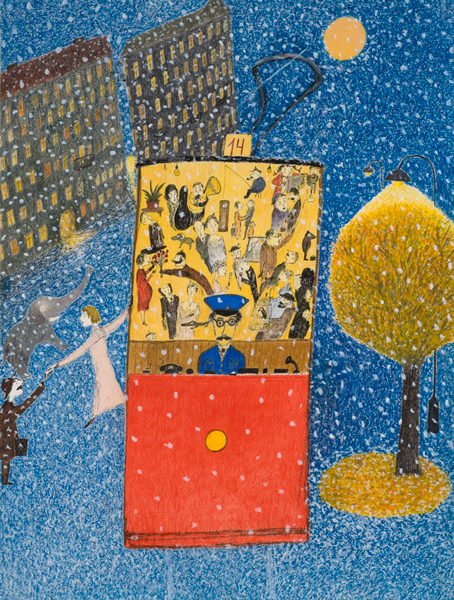 Alexander Voitsekhovsky’s style is unfailingly modest and subtle. It is unpretentious in its each and every aspect, from the plainness of his subject matter to the childlike manner of drawing based on the rejection of perspective and preference for strictly frontal or profile views to the choice of simple crayons as his main medium. The usage of crayons not only enriches the texture of his pictures, not only makes them lighter and more airy due the inherent roughness of the crayon line but also adds some indefiniteness to all the visual forms enhancing the inner truthfulness of the artist’s works.
Alexander Voitsekhovsky’s style is unfailingly modest and subtle. It is unpretentious in its each and every aspect, from the plainness of his subject matter to the childlike manner of drawing based on the rejection of perspective and preference for strictly frontal or profile views to the choice of simple crayons as his main medium. The usage of crayons not only enriches the texture of his pictures, not only makes them lighter and more airy due the inherent roughness of the crayon line but also adds some indefiniteness to all the visual forms enhancing the inner truthfulness of the artist’s works.
